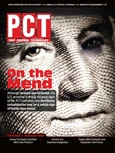Green-Lite
Professionals take note: Consumers are willing to go green, as long as it’s not too much work.
Legions of wannabe green consumers are "not armed with the knowledge or wherewithal to make the change," explained Genna Mazor, senior director of PR at Channel V Media.
She encouraged companies to develop products and services that don’t require consumers to change their habits. The key is to "tap into the average consumer’s desire to do good," without causing her "too much inconvenience."
A lot depends on where customers fit on the National Marketing Institute’s consumer segmentation wheel.
The most dedicated green consumers are the Lifestyles of Health and Sustainability (LOHAS) segment. They account for 19 percent of consumers (43 million) and buy green products, support advocacy groups and are active stewards of the environment.
Naturalites (15 percent/34 million) are interested in natural or organic foods and beverages, but don’t politically commit to the environment or buy eco-friendly durable goods.
Drifters (25 percent/57 million) have good intentions, but can be price sensitive, trendy or have other reasons for not making environmentally friendly choices.
Conventionals (24 percent/53 million) are practical. They don’t have green attitudes but do participate in mainstream activities like recycling and energy conservation.
Unconcerned consumers (17 percent/39 million) show no environmentally responsible behaviors.
And then there are the skeptics, including pest management professionals, themselves. According to an online PCT survey, 82 percent of respondents strongly or somewhat agreed that when an industry product supplier describes its products as green it’s "usually a marketing tactic." Sixty-eight percent occasionally believed green marketing claims made in industry advertisements.
Price also influences behavior. Forty-two percent of pest management professionals are not willing to pay more upfront for green pest control products despite the environmental benefits.
And although consumers still bought green during the recession, premium green pricing was a "non-starter for most shoppers," according to the State of Green Business 2010 report by Greener World Media.
— Anne Nagro
******
DuPont to Reveal Latest
Sustainable Product Packaging
Continuing its commitment to sustainable product packaging, DuPont is planning to convert all of its four-syringe packaging of Advion cockroach and ant gel to 100 percent post-consumer recycled plastic that is 100 percent recyclable, the company reports.
DuPont said it is committed to seeking sustainability in all parts of its business, and a key part of that initiative is reducing waste wherever possible. The new Advion cockroach and ant gel packaging is made from plastic products, such as soda or water bottles, which were previously used and then recycled. This material requires significantly less energy and water to produce and diverts re-useable materials out of the waste stream, according to the manufacturer.
Americans throw out an average of 2.5 million plastic bottles every hour, which translates into nearly 22 billion a year (source: Clean Air Council). These plastic bottles can take an average of 500 years to biodegrade. DuPont’s new packaging will reduce the burden in landfills and help pest control professionals improve their environmental stewardship and positioning to their clients.
DuPont’s most recent packaging announcement was the Terrene packaging, created for DuPont Arilon insecticide. Each Terrene packet contains a premeasured amount of Arilon to help reduce applicator handling and exposure, minimize waste and eliminate the need to triple-rinse prior to disposal of each emptied Terrene packet. They are constructed of material that is biodegradable and compostable, according to ASTM test methods. Each Terrene packet also utilizes water-based ink and adhesives.
To learn more about DuPont’s products and packaging, visit www.proproducts.dupont.com.
*****
VM Products Offers Recycled
Plastic Rodent Bait Station
For pest management professionals interested in providing customers with "environmentally preferable" rodent and fly bait stations, VM Products offers its RBS and MBS rodent stations as well as its FBS1 Fly Station. All RBS1 EZ-Klean, MBS1 and FBS1 Fly Stations are made of 100 percent recycled plastic.
"In an environment where green is becoming more prevalent every day, VM Products is doing everything we can to accommodate the PMP," said Ethan Vickery, president of VM Products, Bedford, Texas.
In addition to being made of recycled plastic, the RBS1 concrete block is made of Type I/II green cement that meets LEEDS specifications. Further, all box materials used by VM Products meet the corrugated industry standard of up to 40 percent recycled ECT post-consumer fiber with water-soluble printing ink, and all black RBS1 EZ-Klean and EZ-Secured bait stations are shipped on 100 percent used recycled pallets.
The firm’s RBS1 EZ-Secured station eliminates the costs associated with securing bait stations to tamper-resistant blocks, VM Products reports. Each block is dyed black and weighs 9 pounds. The RBS EZ-Secured eliminates costs associated with assembling the blocks; the blocks themselves and their delivery; and liquid nails or screws.
For more information about VM Products, visit www.vm products.com.
*****
BASF Pest Control Solutions Bulk Pyrethrum Products Back in Production
BASF Pest Control Solutions announced recently that its Bulk Pyrethrum (BP) products, Prescription Treatment brand ULD BP-50 Contact Insecticide Formula 1, Prescription Treatment brand ULD BP-100 Contact Insecticide Formula 1 and Prescription Treatment brand ULD BP-300 Contact Insecticide Formula 1, are back in production. The supply of the active ingredient, pyrethrum, has improved after a worldwide shortage.
All three products provide quick knockdown and kill of flying and crawling insects in residential and commercial accounts including food-handling areas, the company reports. Each can be applied via directed contact, spot, space or ultra low volume application techniques.
Pyrethrum products are a good choice for those looking for green products because the active ingredient is naturally derived from chrysanthemums, according to Nick Tresslar, marketing manager for General Insect Control Products, BASF Pest Control Solutions, St. Louis, Mo. Pyrethrum is a well-known active ingredient and has been widely used for a number of years, he said.
For more information please contact your sales representative, local pest control distributor or visit www.pestcontrol.basf.us.
*****
Oregon Firm Trademarks The Green Approach to Pest Control
Alpha Ecological, Portland, Ore., not only has trademarked "The Green Approach to Pest Control," the firm has been living it for nearly 15 years. "I knew there had to be a safer and more customer-friendly way for residential pest control," said Scott Sneer, who started in the company’s air duct cleaning division and worked his way up to become CEO. Along the way, his team consulted with local professors and entomologists as they researched the biology of each pest and developed a scientific process targeting each species.
"You need to understand the biology of the pests that you are targeting and the process of the products used against them. We’re a sophisticated industry and we work with sophisticated products; you need to know what you are using and what you are using it for."
"The secret to success in green pest control isn’t a secret at all, and it’s been around a long time. It’s called IPM and it starts with training, training and more training," Sneer said. "The industry needs to get back to the basics: do a proper inspection, pay for the quality products with reduced toxicity and have a strong training program."
Now in its 24th year, Alpha Ecological says it aims to use the most environmentally sensitive products available, treats limited target areas so less product is used, promotes corrective measures around the home, and is an education-driven company that is committed to ongoing technician training, the firm reports.
Alpha Ecological has grown from a single office in Portland, Ore., to offices in five other states: Washington, Idaho, Colorado, Arizona and Texas.
Customers also are responding positively to the company’s marketing efforts, which utilize a colorful and animated frog "Seymour Green" as an unofficial spokesfrog. The frog (and the accompanying green messaging) is prominent in all of Alpha Ecological’s TV and print advertising.
To learn more about the company visit www.sayfrog.com.
*****
New York City Pest Control
Goes "Green" with Innovative
Rat Initiative
The New York City Health Department is now participating with the non-profit IPM Institute of North America’s Green Shield Certified program.
Three years ago, the department launched the Rat Indexing Initiative to proactively control urban rodent populations block-by-block. Now, the program has become the first in the nation to achieve Green Shield Certification, the city reports.
"Rats are an unfortunate and inevitable part of city life, but we all share responsibility for tackling the problem," said Dan Kass, acting deputy commissioner for Environmental Health at the NYC Health Department. "We are proud to achieve Green Shield Certification, and look forward to continued community support for our Rat Indexing Initiative."
First piloted in the Bronx in 2007, the Rat Indexing Initiative uses advanced Integrated Pest Management principles paired with hand-held computers and sophisticated mapping technology to tackle the city’s rat population. Trained inspectors conduct block-by-block inspections to provide property owners recommendations for addressing any pest-conducive conditions such as debris, food or water, and comb the area for any signs of rats. Property owners then receive a notice from the agency to correct conditions observed by the inspectors and have up to two weeks to address the issue. If the owner fails to act or if measures taken are inadequate, the Health Department issues a "Notice of Violation" to the property owner that is adjudicated by the City’s Administrative Tribunal and the Health Department addresses the issue at the cost of the property owner.
Simultaneously, the agency set up a three-day, quarterly Rodent Control Academy to teach pest control professionals and property owners how to effectively and safely control rats. Bobby Corrigan has taught the nuts and bolts of "green" rodent management through the Rodent Control Academy.
The results of the pilot Rat Indexing Initiative in the Bronx have been positive. From December 2007 through July 2009, 29,994 properties in the Bronx were inspected three times by the Health Department; once per each round of the initiative. Infestations declined in every neighborhood inspected and the percentage of infested properties dropped from 10 percent to 5 percent, a decrease of 1,460 properties with signs of rats. All results of the Bronx Rat Indexing Initiative are available to the public and can be found online at www.nyc.gov/rats. Due to this success, the Rat Indexing Initiative was expanded to the entire borough of Manhattan in January 2010.
According to Dr. Thomas Green, president of the IPM Institute of North America, "The New York City Rat Indexing Initiative is truly ground-breaking in its block-by-block approach. The positive results have carefully documented this program’s potential for replication throughout the city, and for other cities nationwide."

Explore the June 2010 Issue
Check out more from this issue and find your next story to read.
Latest from Pest Control Technology
- Finding Qualified Workers, Low-Ball Competitors Top PCO Concerns for 2025
- Rose Pest Solutions Announces Leadership Title Changes
- Truly Nolen Announces Three Promotions
- All Seasons Pest Control (Texas) Acquired by Barefoot Mosquito & Pest Control
- Insects Limited Announces Leadership Changes, Promotions for Continued Growth
- Rockwell Labs Adds Gill as Mid-Atlantic Region Technical Sales Representative
- OvoControl Now Registered Internationally for Use in the UAE
- Cindy Jones Becomes First Woman President of CPCO of Georgia





